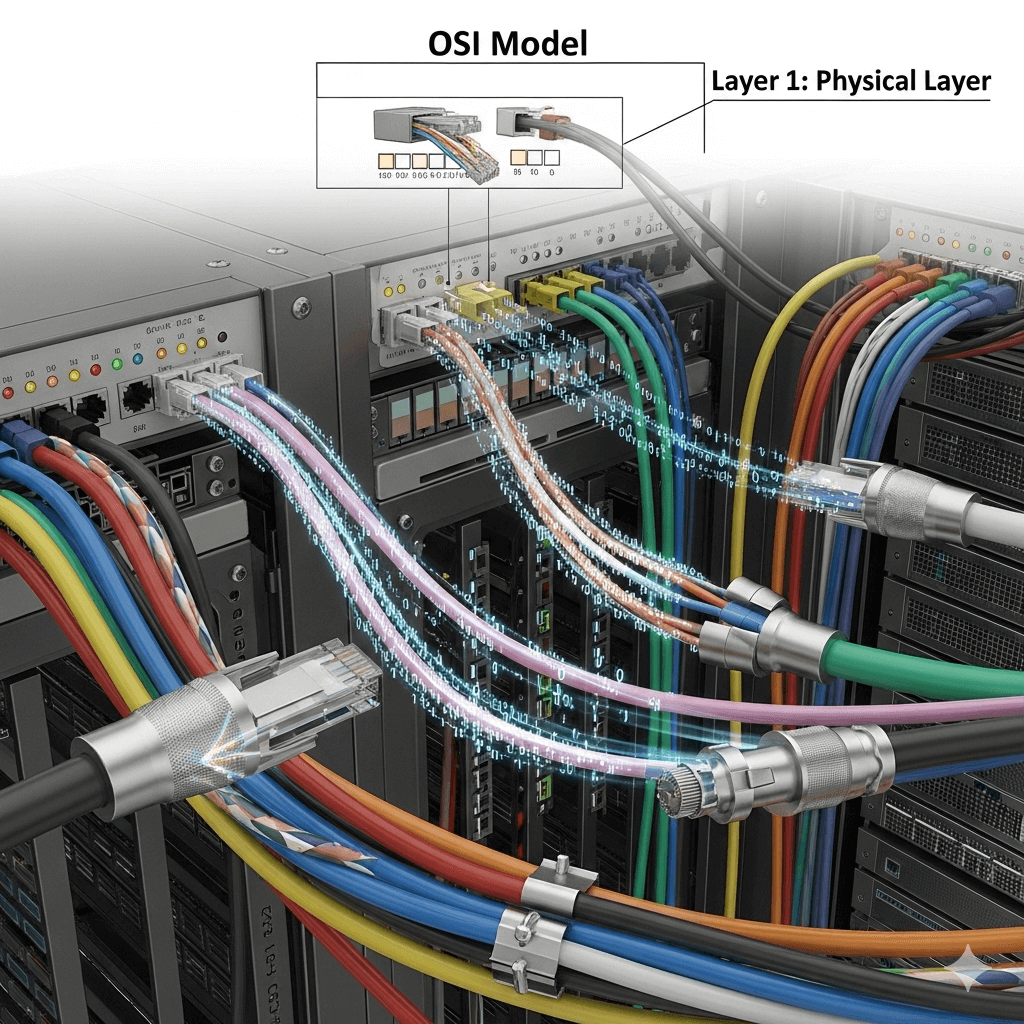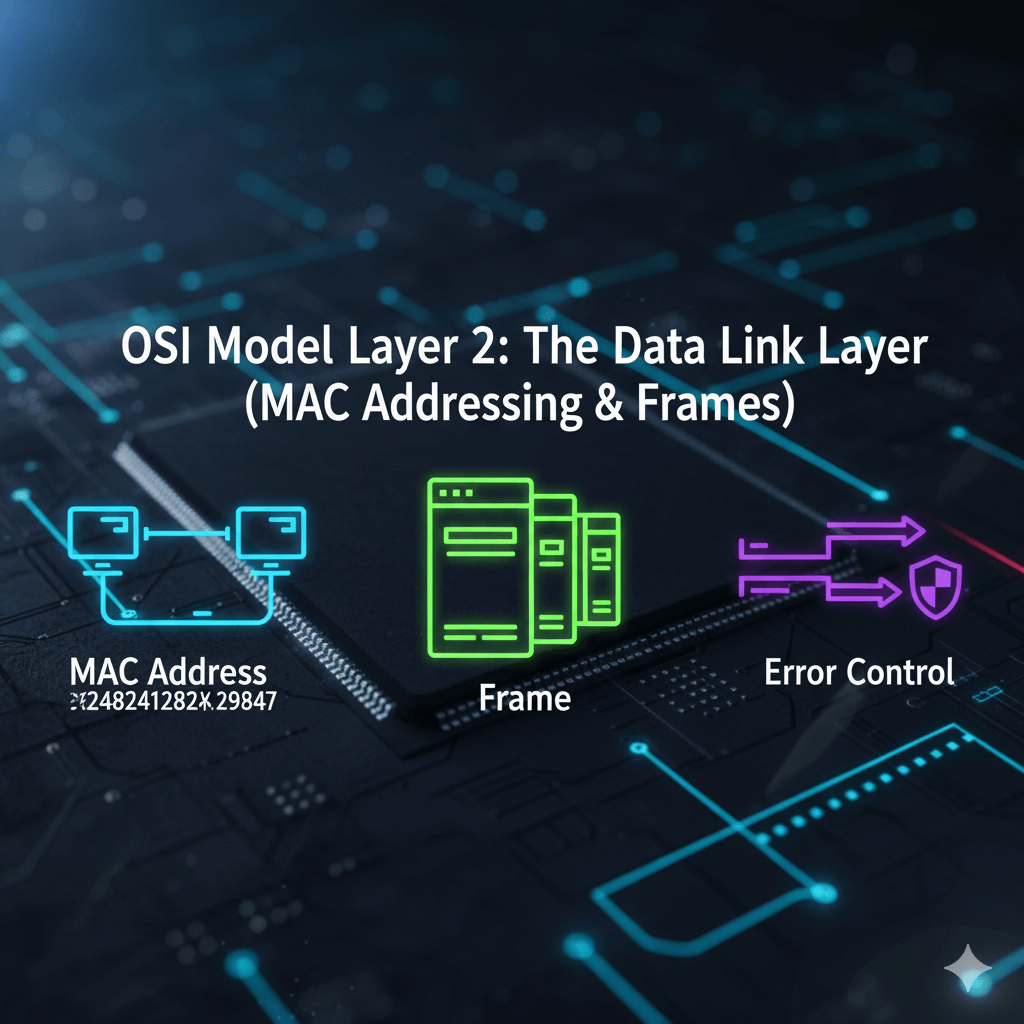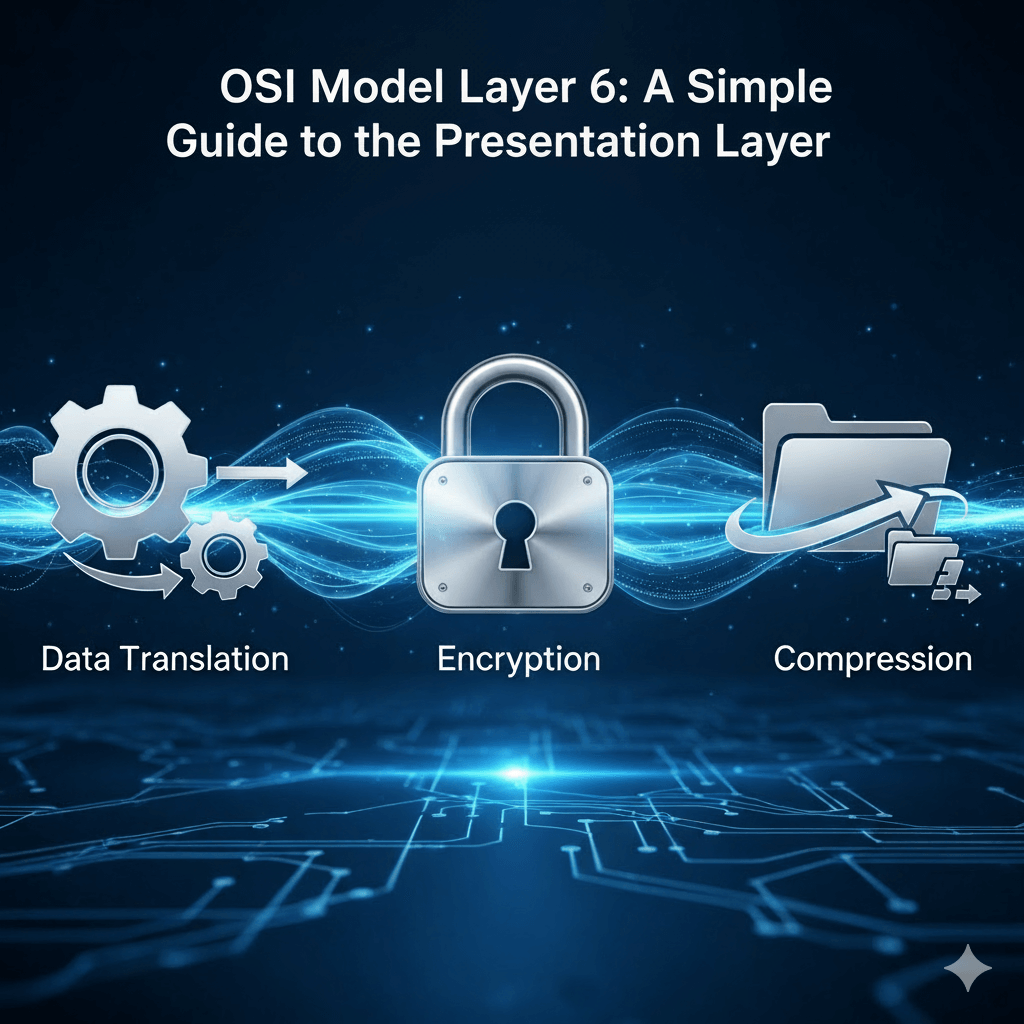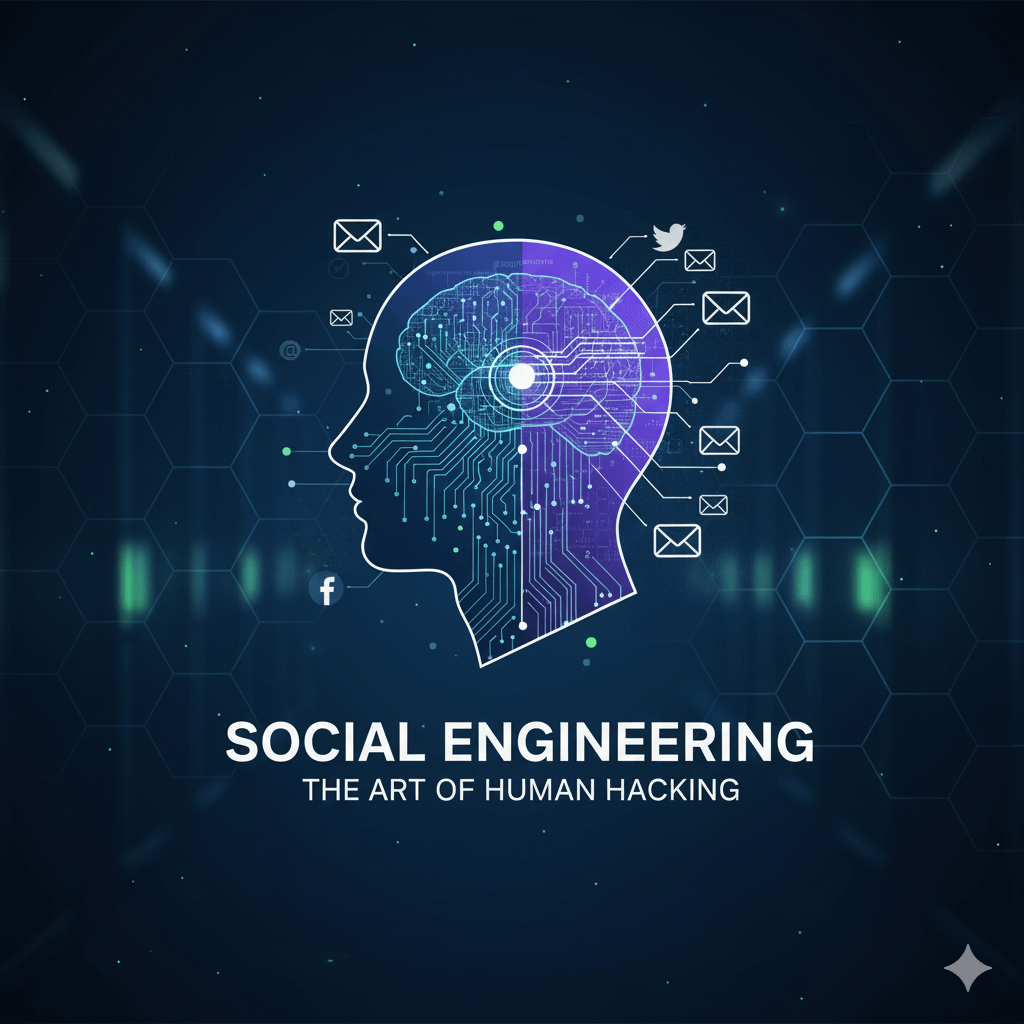OSI Model Layer 1: The Physical Layer (Cables, Signals & Bits)

We’ve completed an incredible journey through the OSI Model! We’ve seen applications create data, the Presentation Layer (Layer 6) format it securely, the Session Layer (Layer 5) manage conversations, the Transport Layer (Layer 4) ensure reliable delivery, the Network Layer (Layer 3) route it globally, and the Data Link Layer (Layer 2) handle local transfers. […]
OSI Model Layer 2: The Data Link Layer (MAC Addressing & Frames)

We’ve covered a lot in our OSI Model series! We’ve seen how the Network Layer (Layer 3) uses IP addresses to route data packets across vast global networks. But what happens when that data packet finally reaches its destination network? How does it make the crucial, final hop from one device to the very next […]
OSI Model Layer 3: The Network Layer (IP Addressing & Routing)

In our last post, we saw how the Transport Layer (Layer 4) prepares our data for its end-to-end journey. But how does that data find its way through the vast, interconnected maze of networks that make up the internet? That’s the mission of Layer 3: The Network Layer. Think of this layer as the global […]
The Transport Layer Explained: How Data Moves Reliably Online

In our last post, we saw how the Session Layer (Layer 5) establishes and manages the conversation between two applications. But once that conversation is open, how do we actually send the data back and forth reliably? That’s the crucial job of Layer 4: The Transport Layer. Think of the Transport Layer as the network’s […]
OSI Model Layer 5: A Simple Guide to the Session Layer

In our last post, we explored how the Presentation Layer (Layer 6) acts as a universal translator, formatting our data securely. Now that our data is ready, it’s time to establish a connection and manage the conversation. Welcome to the engine room of network dialogue: Layer 5, the Session Layer. If the Application Layer is […]
OSI Model Layer 6: A Simple Guide to the Presentation Layer

Have you ever wondered how your computer securely sends information that any other computer can understand, regardless of the brand or operating system? The magic happens in a crucial, often overlooked layer of the OSI model. In the first part of our OSI series, we covered the Application Layer (Layer 7). Now, we’re taking the […]
A Deep Dive into Layer 7: The Application Layer Explained

In our last article, we introduced the OSI Model as a seven-story blueprint for network communication. We took a quick tour of all the floors, but now it’s time to explore each one in detail. Today, we’re starting at the very top: Layer 7, the Application Layer. Of all the layers, this is the one […]
The OSI Model Explained: A Simple Guide for Cybersecurity Beginners

Ever wonder what actually happens when you click a link? It feels instant, but a complex process is taking place. To understand cybersecurity networking basics, we first need a blueprint for how computers talk to each other. That blueprint is the OSI (Open Systems Interconnection) Model. This guide will make the OSI model explained simple […]
The Top 5 Entry-Level Cybersecurity Certifications to Get Hired

You’ve read the roadmap and you’re ready to start your journey into cybersecurity, but one question looms large: “Which certification should I get first?” With dozens of options available, the path forward can seem confusing. Don’t worry, we’re here to clear things up. A certification is more than just a piece of paper; it’s a […]
What is Social Engineering? (The Art of Human Hacking)

What is a hacker’s single most effective tool? It’s not a complex piece of code or a supercomputer. It’s the human mind. The art of exploiting human psychology to bypass security is called Social Engineering, and it’s often the first step in a major cyberattack. In our previous lessons, we’ve talked about what malware is […]
